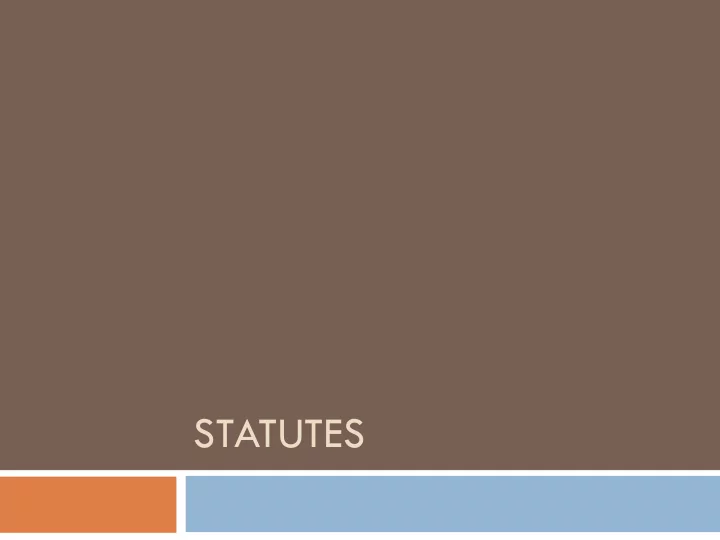

STATUTES
Publication pattern for statutory materials Session Annotated Slip Law Code Law Code
Slip Laws After a bill has been passed by the legislature and signed by the President. Published individually. Can be a public or private law Laws are numbered sequentially through the 2 years of Congress.
Slip Laws Published slowly in print. Available online through Thomas (http://loc.tomas.gov) the same day as the law is passed.
Session Laws Permanent publication of the slip laws published during a legislative session. Organized by date of passage, NOT by subject. Contains the statutory text as originally passed. No subsequent amendments.
Reading Slip and Session Law Citations Citation: Pub. L. No. 105-133, 111 Stat. 2569 Interpretation: Pub. L. No. 105-133 133 rd act of the 105 th Congress which can be found at… 111 Stat. 2569 Statutes at Large volume 111, page 2569
United States Statutes at Large “Session Laws” for the federal government. Arranged chronologically. Publication of the Statutes at Large is about one Congress (or 2 years) behind. Once the Statutes at Large is published, it supersedes the slip laws in that volume. Positive law of the United States.
Codification of Federal Laws Arrangement of laws by subject or topic. Brings together original law and all amendments, reflecting additions and deletions of language. Eliminates all repealed, superseded, or expired laws.
United States Code Issued every 6 years. Supplemented yearly In 1974, Congress created the Office of the Law Revision Counsel and directed the office to revise the code title by title. Each law that is passed may contain: amendatory provisions, freestanding provisions, general and special provisions, and permanent and temporary provisions.
Positive Law Titles v. Non-Positive Law Titles A positive law title is a Federal Statute. A non-positive law title is an editorial compilation of Federal Statutes. If there is a question about statutory language in a non-positive title, the text of the law appearing in the Statutes at Large prevails over the law appearing in the non-positive law title.
Annotated Codes United States Code Annotated (West) United States Code Service (Lexis)
Recommend
More recommend